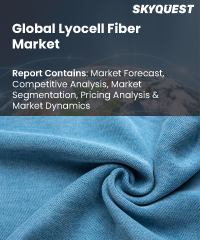
Report ID: SQMIG15A2262
Skyquest Technology's expert advisors have carried out comprehensive research and identified these companies as industry leaders in the Lyocell Fiber Market. This Analysis is based on comprehensive primary and secondary research on the corporate strategies, financial and operational performance, product portfolio, market share and brand analysis of all the leading Lyocell Fiber industry players.
A few large-scale manufacturers control the majority of the lyocell fiber market share globally. The majority of businesses invest a lot on research and development, especially to produce environmentally friendly products. Major techniques employed by prominent players include product portfolio diversification and mergers and acquisitions. The leading players in the lyocell fiber market include Lenzing AG, Grasim Industries Limited, Baoding Swan Chemical Fiber Group Co. ltd., Shanghai Lyocell Fiber Development Co., Ltd., and Smartfiber AG.
REQUEST FOR SAMPLE
Want to customize this report? This report can be personalized according to your needs. Our analysts and industry experts will work directly with you to understand your requirements and provide you with customized data in a short amount of time. We offer $1000 worth of FREE customization at the time of purchase.
Feedback From Our Clients

Report ID: SQMIG15A2262
sales@skyquestt.com
USA +1 351-333-4748